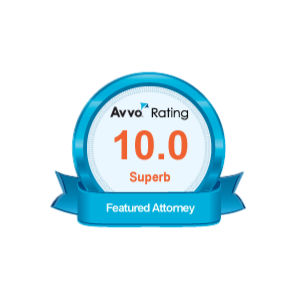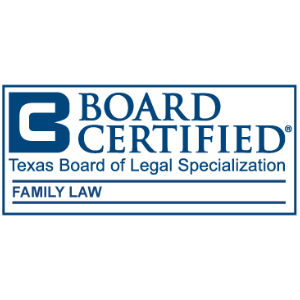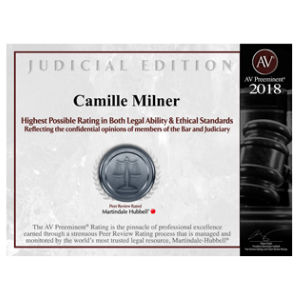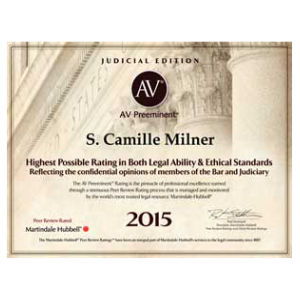 When a family is facing a divorce, the last thing they need is a fight. Unfortunately, somewhere along the way, our society has brain-washed itself into believing that if you no longer love someone romantically you have to hate them and try to hurt them emotionally and financially. People going through divorce are flooded with negative emotions and fear, and as the data from the Project on Negotiation at Harvard Law School concludes, “good decisions are not made when there are negative emotions or fear.” The clients that come to me are always so relieved to learn that there is an option to “going to Court” and figuratively ripping the guts out of the person that they loved and with whom they made promises to spend the rest of their lives together. That option is called Collaborative Law (in some states it is called Collaborative Divorce, Collaborative Practice). So what is the difference between Collaborative Law, “going to court” (litigation), and mediation (or informal settlement)?
When a family is facing a divorce, the last thing they need is a fight. Unfortunately, somewhere along the way, our society has brain-washed itself into believing that if you no longer love someone romantically you have to hate them and try to hurt them emotionally and financially. People going through divorce are flooded with negative emotions and fear, and as the data from the Project on Negotiation at Harvard Law School concludes, “good decisions are not made when there are negative emotions or fear.” The clients that come to me are always so relieved to learn that there is an option to “going to Court” and figuratively ripping the guts out of the person that they loved and with whom they made promises to spend the rest of their lives together. That option is called Collaborative Law (in some states it is called Collaborative Divorce, Collaborative Practice). So what is the difference between Collaborative Law, “going to court” (litigation), and mediation (or informal settlement)?
- Collaborative Law: Around 1990, a visionary lawyer named Stu Webb came up with the idea now known as Collaborative Law, where the lawyers and their clients contractually agree NOT to go to court, but to instead work together (with a team of collaboratively trained professionals) to design a customized settlement for their situation. Many people think, including many lawyers, that the Collaborative Process is the same as informal settlement and mediation, but it is a distinct process that now has statutes throughout the United States authorizing it. In Collaborative Law, the lawyers are specially trained to settle cases with “interest-based” rather than “positional” negotiations. This process enables the parties to effectively be heard by their spouse and have their goals and interests satisfactorily met. Unlike litigation, where a judge, who knows virtually nothing about the family, makes the decisions that the family members must live with, the parties are given the tools, with their lawyers alongside them, to reach a settlement that will be custom-designed for their family. That does not necessarily mean that each party “gets” everything that they want, but together, with the support and help of a specially trained team, they structure an agreement to which they both can agree, considering all the options, without destroying their long-term relationship, their children, or their estate, and they are also able to accomplish this while keeping their personal business private and confidential.
- Litigation: In litigation, the lawyers must prepare from the beginning as if they are going to go to trial in the case, often spending thousands of dollars preparing for a trial that will never take place. Somewhere around 95% of all cases will ultimately be settled prior to trial, but the great loss is how the parties’ resources are used to get to that settlement. The quality of a settlement is vastly better when resources are used to achieve a quality settlement rather than used to prepare for a trial that will never take place. Even if the case does not settle at mediation, it can and often does settle on the date of or shortly before the trial begins. The problem with a settlement that is reached at what lawyers sometimes call “ the courthouse door” (meaning just before trial begins) is that the emotional and financial damage has already been irreparably done to the family, and frankly, no settlement that has been reached hurriedly or under the pressure of trial can ever have the high quality that a collaborative settlement can have, where the parties have taken the time to exhaustively review and divide their estate and consider the financial and emotional needs of their children while together developing their own, personal parenting plan.
- Mediation: A common misconception is that mediation is a process in and of itself. People often say they want to settle their case outside of court through mediation. Mediation is NOT a process in and of itself; rather, mediation is simply a settlement method AFTER a divorce is filed and WITHIN the litigation process. Mediation, depending on the state, is a process, in which a third party who is a trained mediator, takes proposals back and forth between the parties (sometimes the parties have lawyers; sometimes they do not), and the parties may or may not be in the same room. Some disadvantages to mediation are that the mediator typically costs at least $2,000.00 for a day plus the parties have the costs for their attorneys, including prep time and the 8+ hours of the mediation; if the case is not settled, the parties still have the cost of going to trial. Again depending on the state, the parties may have a mediation in which the mediator is ordered by the Court to help the parties reach a settlement in one-day, obviously creating a great deal of pressure on the parties who are working under a time-crunch. Issues are often forgotten as a result of that time pressure; only so much can be covered in one day, which can result in those issues not being dealt with at all or causing the settlement to fall apart. Even with the best mediation, usually only the legal issues are handled.
- Traditional (Informal) Settlement ConferencesCases can also be settled without a formal mediation, in what is commonly termed “informal settlement conferences,” but again a divorce lawsuit has been filed, and the parties and their attorneys send proposals back and forth either meeting in person or by telephone or letter. Thousands of dollars can be spent in this often inefficient process. This can be achieved by parties even without attorneys, but such an agreement still requires that a divorce be filed and a decree of divorce be prepared and presented to the court before the divorce can be granted. If the parties have little or no property and no children, this can be an efficient way to end the marriage, but if there is property and/or children, the complexities usually require the assistance of attorneys to avoid long-term problems that may cost the parties much more than if they had professionals involved from the beginning. Unlike in Collaborative Law, in mediation, informal settlement or trial, the parties have had no one to help them work through the emotional issues that may impede their ability to co-parent their children or have relationships with extended family or mutual friends after the end of the marriage. The Collaborative Process provides a method for couples and families to restructure their lives in a holistic way that will give them all a financially and emotionally healthier and happier future.
When considering divorce yourself or if you have a family member or friend facing divorce, please help them learn about Collaborative Law and the success stories that it has given countless thousands of families in the United States and around the world for the past 25 years. It is a gift you and they can give their family that will last for generations into the future. There are thousands of lawyers in the United States and around the world trained in the Collaborative Process. Directories such as The Collaborative Law Institute of Texas, collaborativedivorcetexas.com, the International Academy of Collaborative Professionals, www.collaborativepractice.com, or the author of this article, Camille Milner, at www.milner-law.com, will provide names of professionals who are trained in this distinct method of conflict resolution and testimonials from clients who have had success with Collaborative Law.
Collaborative Law: A Different and Healthier Way to Divorce
©2015 Camille Milner, J.D.











